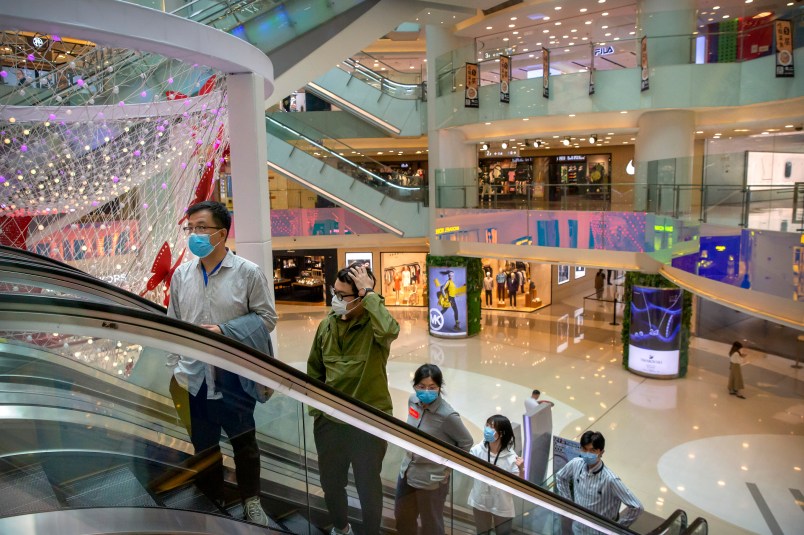Take a moment to read this article in Science magazine about COVID19, aerosol transmission and masks. It’s not a study. It’s published as a “perspective”, more a review of the current science and an argument about the implications of the data. The upshot is a strong argument for universal mask wearing as long as COVID19 remain prevalent in the population and we have no vaccines or effective treatments. The more specific assertions are these.
First, the authors argue that the accepted science about aerosol transmission of respiratory viruses (exhaled fluids that can hang for more than a few seconds in the air) is based on experiments from the 1930s and is simply outdated. Basically the conceptual distinction between big particles that fall rapidly to the ground because of gravity and aerosols that persist in the air is based on 80 year technology that simply couldn’t detect a lot of very small particles. The authors argue that there is abundant evidence that COVID is spread this way, especially by asymptomatic or undiagnosed individuals. This is especially the case is indoors in areas with limited ventilation.
They further argue that six feet distance probably is not sufficient to ensure against contagion. The authors use an analog or perhaps better to say an illustrative comparison about cigarette smoke. If you’re close enough that you can smell the tobacco smoke from someone smoking a cigarette you’re probably close enough to be inhaling aerosolized COVID virus. If that’s a correct comparison obviously six feet isn’t remotely enough.
What I take from this point is not that the authors think we should be extending the distance to 10 feet or completely unworkable distances like 100 feet. The point is the necessity of masking. They list various data points which they say undergirds a strong evidence-based case for masking. They go as far as to argue that the ubiquitous mask wearing in countries like Singapore, Taiwan, Hong Kong, South Korea et al. is a major reason they have suffered so relatively few cases and few fatalities.
One key paragraph …
From epidemiological data, countries that have been most effective in reducing the spread of COVID-19 have implemented universal masking, including Taiwan, Hong Kong, Singapore, and South Korea. In the battle against COVID-19, Taiwan (population 24 million, first COVID-19 case 21 January 2020) did not implement a lockdown during the pandemic, yet maintained a low incidence of 441 cases and 7 deaths (as of 21 May 2020). By contrast, the state of New York (population ~20 million, first COVID case 1 March 2020), had a higher number of cases (353,000) and deaths (24,000). By quickly activating its epidemic response plan that was established after the SARS outbreak, the Taiwanese government enacted a set of proactive measures that successfully prevented the spread of SARS-CoV-2, including setting up a central epidemic command center in January, using technologies to detect and track infected patients and their close contacts, and perhaps most importantly, requesting people to wear masks in public places. The government also ensured the availability of medical masks by banning mask manufacturers from exporting them, implementing a system to ensure that every citizen could acquire masks at reasonable prices, and increasing the production of masks. In other countries, there have been widespread shortages of masks, resulting in most residents not having access to any form of medical mask (15). This striking difference in the availability and widespread adoption of wearing masks likely influenced the low number of COVID-19 cases.
I really recommend reading the whole thing. It’s short and fairly accessible to a lay reader.






